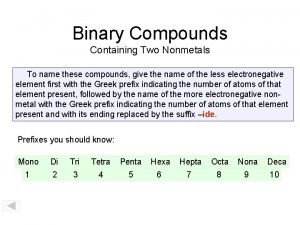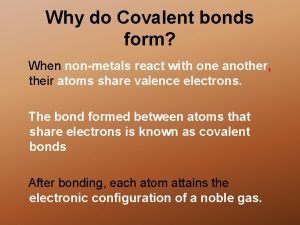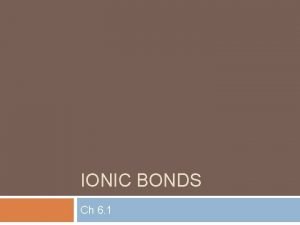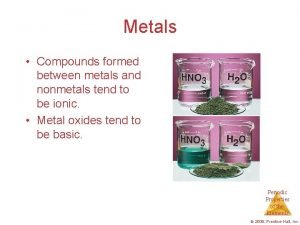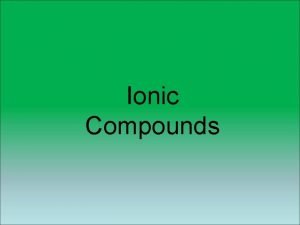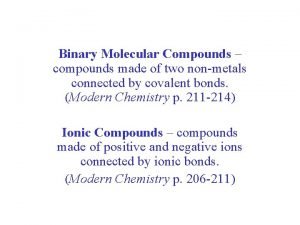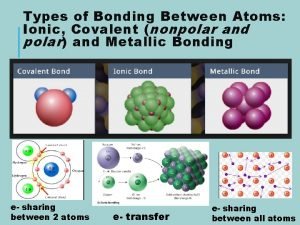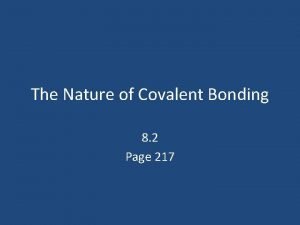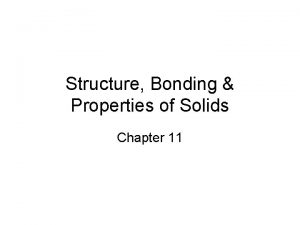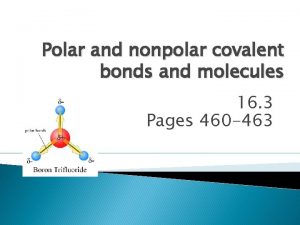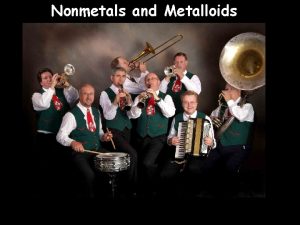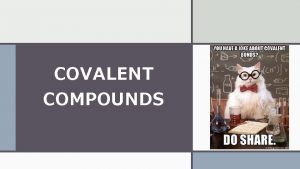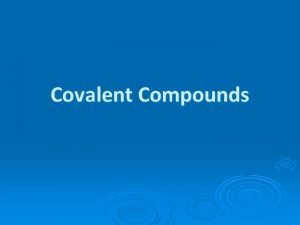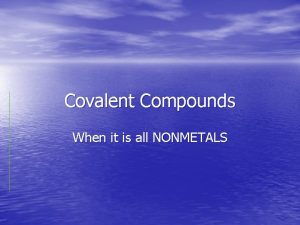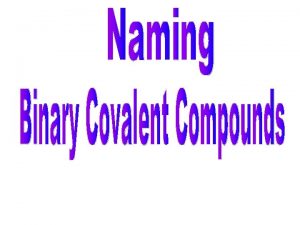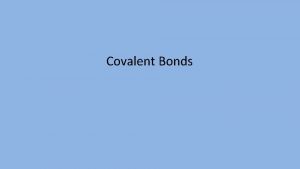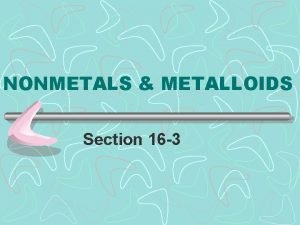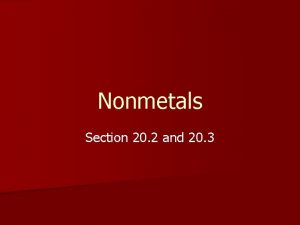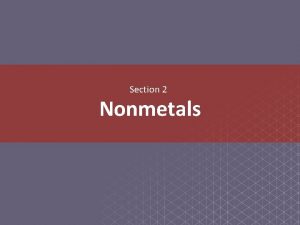Covalent Covalent compounds Covalent compounds are two nonmetals














- Slides: 14

Covalent

Covalent compounds • Covalent compounds are two nonmetals bonded together • Naming covalent compounds is easy! • Name the first element • Name the second element ending in –ide • Use prefixes to tell the number of atoms

Prefixes 1. 1. Mono (only on 2 nd element) 2. Di 3. Tri 4. Tetra 5. Penta 6. Hexa 7. Hepta 8. Octa 9. Nona 10. Deca

Examples • SO 2 – sulfur dioxide • CH 4 – carbon tetrahydride • N 2 O 4 – dinitrogen tetroxide

Practice – write the names 1. CO 2 2. CCl 4 3. P 2 O 5 4. H 4 N 5. HCl

Summary • Ionic compounds have metals with a nonmetal • Covalent compounds have nonmetals only • Ionic compounds can have polyatomic ions • Ionic compounds can have transition metals that need a Roman numeral in the name • Covalent compounds can have prefixes • Both compounds end in –ide (unless polyatomic ion)

Do you understand? 1. 2. 3. 4. How can you tell if a formula is ionic or covalent? How can you tell if a formula will require a Roman numeral? How can you tell if a formula includes a polyatomic ion? How can you tell if a formula will need prefixes?

Covalent compounds • Molecular compound because covalently bonded atoms are what makes up a molecule

Diatomic Molecules (Mr. Br. INCl. HOF) • Seven elements run around as pairs • You can remember them as Mr. Br. INCl. HOF • When alone, they will always be written with a 2 subscript • Hydrogen reacts with oxygen H 2 reacts with O 2

Sharing Electrons • Electrons that are shared are bonding electrons • Electrons that are not shared are called lone pairs (nonbonding pairs)

Covalent compounds by bonding electrons • Single covalent bond – one pair of bonding electrons shared • Double covalent bond – two pairs of bonding electrons shared • Triple covalent bond – three pairs of bonding electrons shared

Bond properties based on bond types • Bond length: the length of the bond between two atoms; decreases as more electrons are shared • Shorter…triple < double < single…Longer • Bond energy: energy required to break the shared electron bond; increases as more electrons are shared • Easier to break…single < double < triple… more energy to break

Representing molecules

Do you understand? 1. What’s another name for a covalent compound? 2. Draw the Lewis dot structure for H and O. 3. Now draw a structural formula for water, using lines to represent the shared electrons (bond). 4. Why would it take more energy to break a triple bond than an single bond? 5. Each molecule has a particular shape. What do you think determines how the atoms align in space?
 Insidan region jh
Insidan region jh How to name two nonmetals
How to name two nonmetals Metallic bonding facts
Metallic bonding facts Covalent bonds form when nonmetals
Covalent bonds form when nonmetals All polyatomic ions are anions true or false
All polyatomic ions are anions true or false Compounds formed between metal and nonmetals
Compounds formed between metal and nonmetals Non metals examples
Non metals examples Metals react with nonmetals to form ionic compounds by
Metals react with nonmetals to form ionic compounds by Binary molecular compounds are made of two
Binary molecular compounds are made of two Ionic nonpolar covalent polar covalent
Ionic nonpolar covalent polar covalent How many single covalent bonds can halogens form?
How many single covalent bonds can halogens form? Covalent molecular and covalent network
Covalent molecular and covalent network What is polar covalent bond and nonpolar covalent bond
What is polar covalent bond and nonpolar covalent bond Covalent molecular and covalent network
Covalent molecular and covalent network Silicon carbide covalent network
Silicon carbide covalent network

